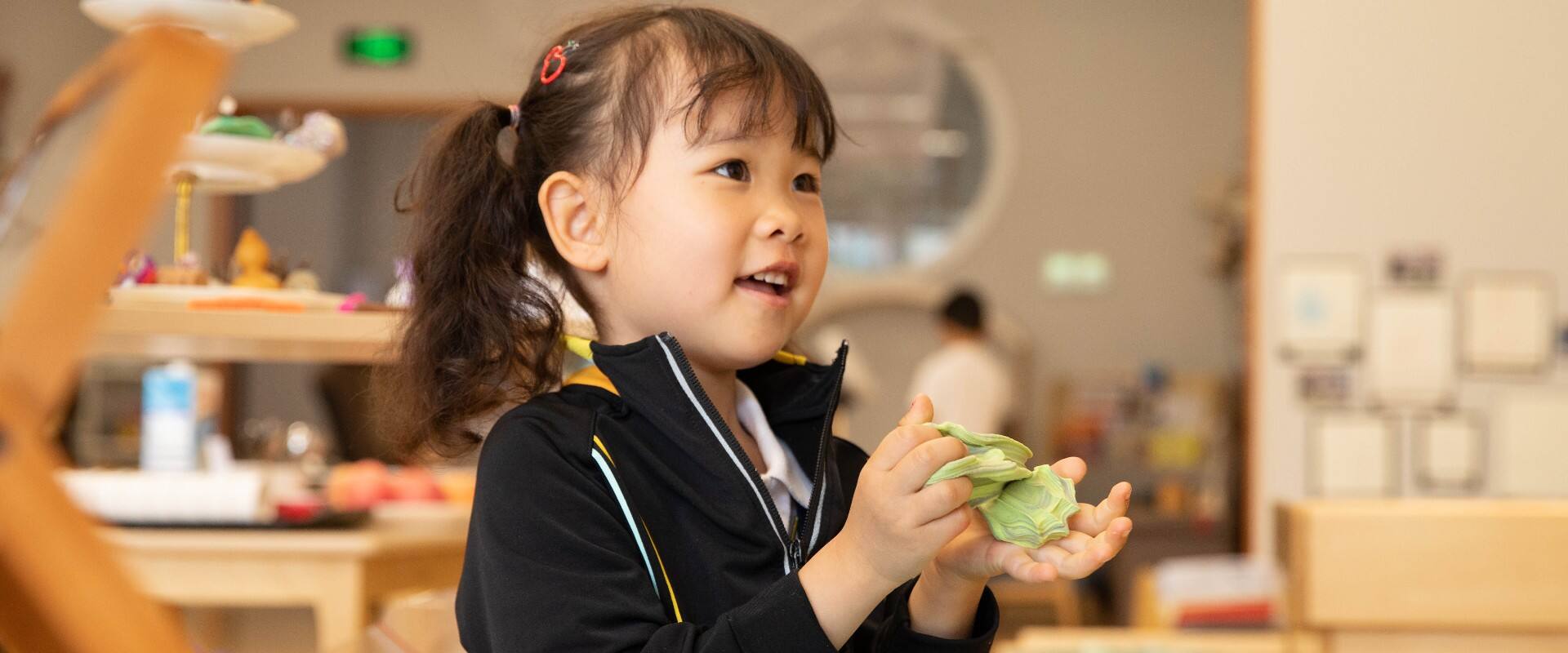
From August 2024 to June 2025, the Nursery at Hiba Academy Hangzhou has been diligently working towards earning the Curiosity Approach accreditation. The Curiosity Approach is renowned worldwide as a fusion of pedagogical visions, including those of Reggio Emilia, Montessori and Steiner. A key element of this approach is the environment, which fosters a sense of belonging through the use of natural and authentic resources. Anyone who steps into the Nursery will attest to the impressive and carefully designed environments — not just to please the eye, but to encourage deep learning, facilitate relationship building and promote critical thinking. In their philosophy, the environment acts as the third teacher, alongside the child's adults and peers.
Feedback from the assessment panel (on the 350 pages of evidence submitted!) highlighted:
The setting already embraces the Reggio Project Approach, and their detailed submission demonstrates how seamlessly this aligns with The Curiosity Approach, with both placing children's interests at the heart of practice. At the Nursery at Hiba Academy Hangzhou, a calm and inspiring environment has been created through the use of natural, authentic materials and loose parts, enriching children's learning experiences and supporting staff to confidently embed The Curiosity Approach.
Each module of the accreditation process focused on a different element of the environment. From intelligent resources to storytelling opportunities, and from provocations to sensory experiences, the modules encouraged a deep dive into current practices and areas that could be strengthened further. During the first module, they audited their resources to challenge themselves to explore the reasons behind their choices. It was found that the Nursery had deeply embedded the use of authentic, natural resources integral to the Curiosity Approach. However, some areas showed room for improvement — for instance, transitioning away from pre-dyed, hyper-pigmented air-drying foam clays to sustainable natural clays that children can paint or colour according to their preferences. This shift not only benefits the environment and children's health but also promotes choice, autonomy, imagination and creativity among our pupils.
Our bilingual co-teaching model provided a unique perspective for exploring Module 6 – Storytelling. Utilising both Chinese and English, the creative teaching teams use stories as the foundation for learning — whether through traditional tales from various cultures, stories with moral elements to support social development, or books underpinning class project investigations. Storytelling is deeply embedded in the Nursery, with events like Literacy Week and teaching approaches such as Drama in Education, Talk4Writing and Tales Toolkit. The specially curated Parent Workshop supported families in using storytelling as a crucial element of their child's development—enhancing language skills, imagination, literacy knowledge and active listening. Using open-ended resources as props for storytelling opens imagination for recreating firm favourites and becoming authors in their own right! Rather than only set characters, the pupils can use loose parts to enact stories and adventures according to their own thoughts or ideas. A pebble can be a boat or an elephant, a wooden block could be the Gruffalo and a glass nugget a piece of pirate treasure – anything is possible.
Let us explore a practical example of the environments working as a third teacher, alongside adults and other children. In the EY1 classroom, authentic materials have replaced old plastic ones, leading to sustained thinking even in the youngest learners when faced with real objects rather than toy equivalents. Children derive joy from replicating the adults around them—how often does a child desire the real phone over a toy one? By trusting children with real resources instead of pretend options, the value of their play is elevated.
This was evident when EY1 introduced a real sink into their outdoor balcony. Made safe by the Facilities team, the metal sink has become a focal point for water play. The learners develop their understanding of cause and effect by being able to explore the intricate pipe system that is exposed to them through trial and error. This also offers the children the opportunity to engage in creative and critical problem-solving. When the water stops flowing, they can use their investigative skills and work out why. Within this area, there are a multitude of authentic kitchen utensils such as metal spoons, cullenders and ceramic tea pots, allowing the children to recreate their everyday lives through play.
Trusting children with authentic resources — the real deal — demonstrates respect for their experiences and strengthens the home/school connection. It also supports the children's curiosity about how resources can be used in different ways, such as using a spoon for painting or a cheese grater to cut down chalk into a fine powder. The children are learning that one item can be used and explored in many ways, which empowers them to be pioneers of their own learning.
We are so proud of the hard work and dedication demonstrated by the staff in the Nursery and their unwavering commitment to providing the best for the pupils. Special thanks go to the Curiosity Approach Accreditation team who led the charge: both Ms Lucy's, Ms Tanis, Ms Yvonne, Ms Marisa and Ms Tracy.
Our Nursery is now supporting the sister schools in Tianjin and Shanghai as they embark on their accreditation journeys, further deepening the bonds within the educational family.
The Nursery at Hiba Academy Hangzhou — Inspiring curiosity, awe and wonder in their youngest learners.
“
Each one of us needs to have curiosity.
— Loris Malaguzzi, Your Image of the Child – Where Teaching Begins (1993)